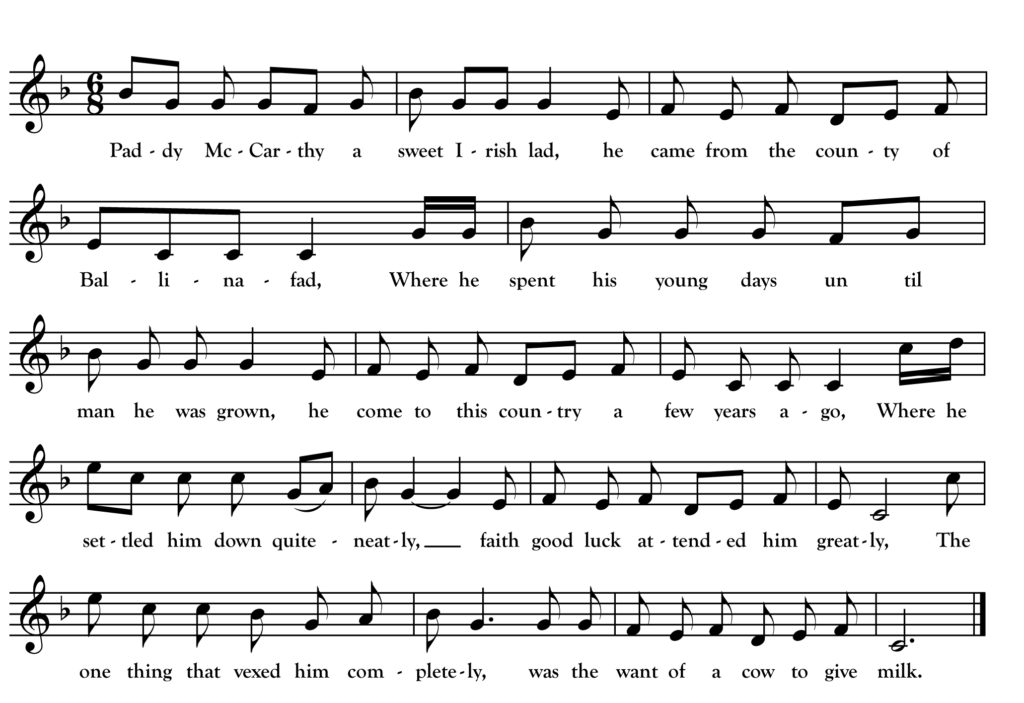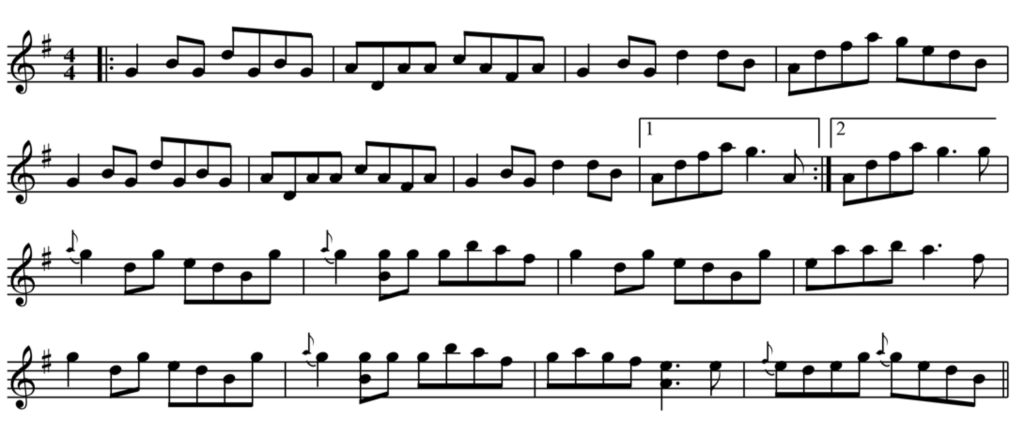The Protestant Cow

Paddy McCarthy, a sweet Irish lad, he came from the county of Ballinafad,
Where he spent his young days until man he had grown, he come to this country a few years ago,
Where he settled him down quite neatly, faith good luck attended him greatly,
The one thing that vexed him completely, was the want of a cow to give milk.
So then he consulted his wife Peggy Ann, a nice little girl from the County Cavan,
She said that her milk she must have anyhow, so Paudie went out for to buy her a cow,
To buy one he struck out so gaily, twirling his blackthorn shillelagh,
’Til he met with old farmer Bailey, a Protestant Yankee so cute.
They haggled around and a bargain soon made, the price of the cow to the farmer Pat paid,
Singing along the way sir as he drove home his newly bought cow.
He arrived at the gate, Peggy Ann at the door, such an elegant creature she’d ne’er seen before,
“Where did you get her?” said Peggy so gaily, “To see sure I bought her from old farmer Bailey.”
“From that Protestant thief? Blood and thunder! Oh Pat she’s a Protestant cow!”
“[ ] never mind that, go into the house and mind what you’re at,
A bottle of holy water bring out to me now, and I will soon make her a Catholic cow”
A bottle of blue liquor she brought out instead, so Pat began pouring it on the cow’s head,
Making the sign of the cross as he poured, all in a sudden the cow let a roar.
They looked at each other with faces so blue, thinking that she was a Protestant cow,
Says Pat “There must be something wrong in her. Or isn’t the Protestant strong in her,”
“Musha may the Devil go on with her! Pat she’s a protestant cow.”
Searching the many online archives of American newspapers from the 1800s turns up dozens of printings and reprintings of versions of this humorous story about Pat and Peggy Ann and their attempt to convert their new cow to Catholicism. However, I can find none that tell the story in verse. Interestingly, an Irish telling of the story turns up in Ireland’s recently digitized National Folklore Collection as recounted by a school boy in Collooney, Co. Sligo–just up the road from Ballinafad.
Two sung versions were collected in Beaver Island, Michigan by Alan Lomax and Ivan Walton from brothers Barney and James Martin in 1938 and 1940. You can hear Barney’s version (my main source for the above transcription) on the Library of Congress website. James Martin said he brought the song to Beaver Island from a lumber camp in Schoolcraft County on Michigan’s Upper Peninsula where a Canadian lumberjack named Campbell sang it around 1890.


